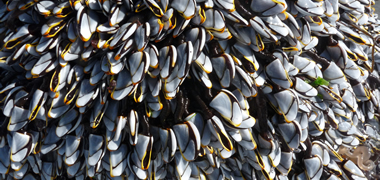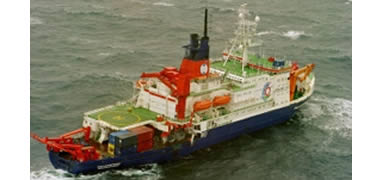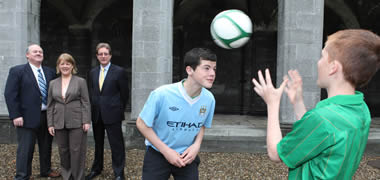-
Courses

Courses
Choosing a course is one of the most important decisions you'll ever make! View our courses and see what our students and lecturers have to say about the courses you are interested in at the links below.
-
University Life

University Life
Each year more than 4,000 choose University of Galway as their University of choice. Find out what life at University of Galway is all about here.
-
About University of Galway

About University of Galway
Since 1845, University of Galway has been sharing the highest quality teaching and research with Ireland and the world. Find out what makes our University so special – from our distinguished history to the latest news and campus developments.
-
Colleges & Schools

Colleges & Schools
University of Galway has earned international recognition as a research-led university with a commitment to top quality teaching across a range of key areas of expertise.
-
Research & Innovation

Research & Innovation
University of Galway’s vibrant research community take on some of the most pressing challenges of our times.
-
Business & Industry

Guiding Breakthrough Research at University of Galway
We explore and facilitate commercial opportunities for the research community at University of Galway, as well as facilitating industry partnership.
-
Alumni & Friends

Alumni & Friends
There are 128,000 University of Galway alumni worldwide. Stay connected to your alumni community! Join our social networks and update your details online.
-
Community Engagement

Community Engagement
At University of Galway, we believe that the best learning takes place when you apply what you learn in a real world context. That's why many of our courses include work placements or community projects.
2012
All 2012
Scientists Seek Sticky Barnacles with Social Media Campaign

Wednesday, 18 July 2012
Researchers at the Ryan Institute at NUI Galway are hoping to enlist the help of the general public to gather a rare barnacle which occasionally washes up on Irish shores. The specimens will be used to advance scientific knowledge surrounding the adhesive properties of barnacles. Barnacles have an amazing ability to attach themselves to every surface imaginable – even non-stick frying pans – and researchers at NUI Galway are studying the glue that the barnacle produces. They hope that one day synthetic versions of this natural underwater super-glue will be available for use in applications such as surgery and dentistry. However, the species under study is the goose barnacle (Lepas anatifera), which is lives out at sea and is very difficult to find. In order to continue their research more goose barnacles are required and the research group has now launched a media campaign, including a facebook and twitter campaign, to encourage the public to help find them. A Zoology PhD student, Jaimie-Leigh Jonker, who is working with NUI Galway’s Dr Anne Marie Power, explains: “These large goose barnacles sporadically wash ashore along the Irish coast in a mostly unpredictable manner; while popular surfing beaches like Fanore and Doughmore Bay have proved fruitful in the past, these animals could wash up anywhere. When washed ashore they will die from exposure to heat, light and air, unless we find them first and bring them back to our aquarium.” Barnacles secrete a glue-like substance which consists of several proteins and somehow sticks to both the barnacle’s body and whatever surface it is on, where it hardens to form a very strong ‘cement’. “It might seem perfectly ordinary that a sea creature can stick to a surface, but if you stop to think about it you may realise that it’s actually quite an incredible innovation by nature, says Jaimie-Leigh. “We humans haven’t managed to create glues that can be used successfully in wet environments, but nature has done it over and over again.” The purpose of the current research at NUI Galway is to understand how the barnacle glue works, through examining both the glands inside the body that produce the glue and the proteins that make up the glue. “Eventually we hope to be able to create synthetic proteins with the same adhesive properties, which could be put to use as glues for surgery and dentistry”, explains Jaimie-Leigh. “Within just a decade or so the way that we practice surgery is likely to change greatly, with one of those changes being the replacement of sutures, staples and pins with adhesives copied from nature.” Jaimie-Leigh and her colleagues would love to hear from anybody that comes across goose barnacles on the Irish coast this summer. You can contact the barnacle research group at the Zoology in NUI Galway, on 091 493191 or through email (j.jonker1@nuigalway.ie), twitter (@BarnacleHunt) and facebook (https://www.facebook.com/TheAmazingGooseBarnacle). -ENDS-
>> Read full story about Scientists Seek Sticky Barnacles with Social Media Campaign
Fujitsu Announces Significant Research Programme with DERI at NUI Galway

Thursday, 19 July 2012
Fujitsu Ireland today announced that Fujitsu Laboratories Ltd., a wholly owned subsidiary of Fujitsu, the global ICT giant, will begin a significant investment in a research programme with Digital Enterprise Research Institute (DERI) based in NUI Galway. The research will be conducted in the area of Networked Knowledge, identifying new models and commercial opportunities for exploiting the vast quantities of static and dynamic data on the Internet, making it more valuable to end-users. The programme has been supported by the Government through IDA and Science Foundation Ireland. Tatsuo Tomita, President of Fujitsu Laboratories Ltd., commenting on the announcement said, “Fujitsu aims to enable a ‘Human Centric Intelligent Society’ for which Fujitsu Laboratories conducts R&D of advanced technologies to generate value by linking individuals, things, and information, and will leverage such created value to conduct R&D of advanced technologies to offer inspiration, discovery, reliability, and growth. Big data will be the foundation for enabling such a society, and we at Fujitsu view as essential the data processing of big data - in other words, the gathering, semantic analysis, and categorisation of big data. This joint research collaboration with DERI featuring large-scale research resources in the field of Semantic Web offers new R&D opportunities and represents a step forward toward the realization of a Human Centric Intelligent Society envisioned by Fujitsu.” Minister for Jobs, Enterprise and Innovation, Richard Bruton TD, said: “Key to the Government’s plan to get growth and jobs back into the economy again is a determination to ensure that we get a better commercial return from State-funded research. That is why the recent Research Prioritisation exercise focused on turning good ideas into good jobs by selecting a small number of areas where investment will be targeted. “Future networks is one of the areas selected, and today’s announcement that world-leading company Fujitsu is investing in industry-led research activity in this area shows what is possible. I commend IDA and Science Foundation Ireland on their work which has enabled today’s announcement. I am determined that, through continued implementation of the Action Plan for Jobs, industry-led research in the priority areas will see more commercialisation and ultimately more jobs for Ireland.” Commenting on how this announcement will impact positively on Ireland, Regina Moran, CEO of Fujitsu Ireland said, “The aim of the research programme is to ensure that the results it delivers are the seeds for the innovation of commercial services and products right here in Ireland. If Ireland is to succeed in being a leader in technology innovation, investment in world-class research programmes such as this, here in Ireland, are critical. We cannot stand in the wings waiting for innovations elsewhere in the world to reach us, we need to demonstrate leadership.” The research will be led by Professor Stefan Decker, Director of DERI at NUI Galway and one of the leading scientists in the Semantic Web field. He and the research team will be investigating models and approaches for integrating and validating data available on the Internet with a view to enabling innovative applications and businesses to be designed and brought to the market across numerous industries. Professor Stefan Decker said: "There was an immediate meeting of minds when we met with the team from Fujitsu. Their vision around human centric computing has great synergies with our research on the Semantic Web. This programme will create high-end research jobs in Ireland, adding to our team of scientists here. With a strong focus on innovation and research, we expect that more job opportunities will arise as the research progresses.” Welcoming the investment, Barry O’Leary, CEO IDA Ireland said “I would like to offer Fujitsu Ireland my congratulations on securing this important R&D investment from Fujitsu Laboratories. The complexity of the project is a key endorsement of the calibre of personnel working in the Irish operation and further solidifies the company in Ireland.” This research programme with DERI will begin in July 2012. -ends-
>> Read full story about Fujitsu Announces Significant Research Programme with DERI at NUI Galway
Phytoplankton Blooms May Remove Atmospheric Carbon

Thursday, 19 July 2012
Researchers Publish Results of an Iron Fertilisation Experiment in the Scientific Journal Nature Carbon can be transported to the bottom of the ocean, and stored there, by sinking microscopic phytoplankton following iron fertilization, according to a report co-authored by Professor Peter Croot, National University of Ireland (NUI) Galway in Nature this week. These findings are by no means a green light for using this approach to generate carbon offsets. The researchers note that further experiments are needed to evaluate the effects on ecology, climate and the processes that determine the composition of the environment. These results do however provide a valuable contribution to our understanding of the global carbon cycle. “These new data clearly shows that at the end of this phytoplankton bloom, a significant amount of the carbon was transported to the deep ocean over a relatively short time, a phenomenon which had not been observed in any great detail previously anywhere in the ocean” explained Dr Croot. Previous ocean iron fertilization experiments have failed to adequately demonstrate the fate of resulting phytoplankton population explosions and hence removal of carbon from the atmosphere to the deep ocean. Dr Peter Croot and colleagues from the Alfred Wegener Institute for Polar and Marine Research in the Helmholtz Association, Germany, present multiple lines of evidence from the European Iron Fertilization Experiment in the Southern Ocean that suggest carbon is exported to the deep ocean as a result of iron fertilization. The ocean iron fertilization experiments induce phytoplankton blooms, and sinking particles are tracked from the surface to the ocean floor. Taken together, their data indicate that at least half of the bloom biomass sank to below 1,000 metres, where it could potentially be stored for centuries. The international team on board the research vessel Polarstern fertilized a part of the closed core of a stable eddy of the Southern Ocean with dissolved iron which stimulated the growth of unicellular algae (phytoplankton). The team followed the development of the phytoplankton bloom for five weeks from its start to its decline phase. The maximum biomass attained by the bloom was higher than that of blooms stimulated by the previous 12 iron fertilization experiments. According to Professor Dr Victor Smetacek and Dr Christine Klaas from the Alfred Wegener Institute for Polar and Marine Research in the Helmholtz Association, this was all the more remarkable because the EIFEX bloom developed in a 100 metre deep mixed layer which is much deeper than hitherto believed to be the lower limit for bloom development. The bloom was dominated by diatoms, a group of algae that require dissolved silicon to make their shells and are known to form large, slimy aggregates with high sinking rates at the end of their blooms. “We were able to prove that over 50 per cent of the plankton bloom sank below 1000 metre depth indicating that their carbon content can be stored in the deep ocean and in the underlying sediments for time scales of well over a century”, says Smetacek. “These new findings highlight how differences between the species of phytoplankton that make up the community that formed the bloom can impact the sinking flux and transport of carbon as the bloom decays” adds Dr Croot. “This has implications for the biogeochemical cycling of other important elements in the ocean such as nitrogen, phosphorus and iron which are also part of the sinking material. In the context of Ireland’s marine areas, this work suggests a new area of focus for research targeting the end of phytoplankton blooms, rather than the traditional emphasis on the start of the spring bloom, in order to improve our overall understanding of how this economically important ecosystem functions.” Iron plays an important role in the climate system. It is involved in many biochemical processes such as photosynthesis and is hence an essential element for biological production in the oceans and, therefore, for CO2 absorption from the atmosphere. During past ice ages the air was cooler and drier than it is today and more iron-containing dust was transported from the continents to the ocean by the wind. The iron supply to marine phytoplankton was hence higher during the ice ages. This natural process is simulated in iron fertilisation experiments under controlled conditions. The EIFeX (European Iron Fertilisation Experiment) was a collaborative effort that involved representatives of 14 institutes and 3 companies from 7 European countries and the Republic of South Africa. -ends- http://www.nature.com/news/dumping-iron-at-sea-does-sink-carbon-1.11028
>> Read full story about Phytoplankton Blooms May Remove Atmospheric Carbon
Online Education for Parents of Children with Coughs and Colds

Monday, 23 July 2012
The School of Psychology at NUI Galway is currently recruiting parents of young children to take part in an online education programme. The programme offers parents the opportunity to access information relating to the treatment of coughs and colds in their young children. It will focus on dispelling myths relating to over the counter treatments and provide instruction on how to cope with a sick child. The overall aim of the session is to inform and help parents. Young children are at greatest risk of frequent colds, with children catching as many as seven to ten colds throughout the year, not just during the winter months. There are more than 200 different cold viruses, and signs and symptoms tend to vary greatly. The online programme is part of a research project being carried out at NUI Galway by Dr Jane Walsh, a lecturer in psychology at NUI Galway, and PhD student Teresa Corbett. Parents will be in with the chance to win one of two prizes worth €50 in return for their participation in this study. The researchers are specifically interested in hearing from parents of children aged 3-6 years of age. Dr Walsh said: “We all hate to see our children suffer with the symptoms of a cough or cold, so it is important for parents of young children to take the time to learn what can be done to ease those symptoms appropriately. This project is hoping to establish if online education systems may be delivered effectively to help these individuals. Busy parents can simply log on and learn how a cold can be managed effectively.” “This online setting is particularly fitting for parents as it may be accessed at their convenience, fitting in with their hectic daily schedule”, added Dr Walsh. “The programme layout is easy to use and does not take long for busy individuals who would like to log on and learn more about these everyday symptoms in their child.” The programme is designed to be accessible to all people who have a computer. GPs, friends and family are encouraged to refer interested individuals to participate. For further information, please contact Teresa Corbett, at t.corbett2@nuigalway.ie, or go to http://www.nuigalway.ie/psy/sub/coughsandcolds.html -ends-
>> Read full story about Online Education for Parents of Children with Coughs and Colds
NUI Galway Support 2012 Umbro Galway Cup

Tuesday, 24 July 2012
NUI Galway is delighted to support the 2012 Umbro Galway Cup which is now regarded as one of the leading underage soccer tournaments in Europe. Attracting teams from nine countries across the globe including Spain, Sweden, Canada, Finland Russia and Israel, the 2012 tournament is no exception with 49 teams competing. Almost 1,100 soccer players and officials will be in Galway for the four-day tournament running from 8-11 August. Matches will take place in Drom Soccer Park in Rahoon, while the teams will stay in NUI Galway’s campus accommodation, Corrib Village, and avail of the campus catering facilities in the University restaurants. Speaking at the launch of NUI Galway’s sponsorship of the 2012 Tournament, Dr Jim Browne said: “NUI Galway is delighted to support the Umbro Galway Cup which gives Irish players a chance to compete at the highest echelons in soccer at a young age. We have a distinguished tradition of sport on our campus and we recognise that participation in this competition is an enriching experience for young soccer players. I am delighted to see that over 30 Irish teams will compete and on a personal note I’m looking forward to welcoming Manchester City players and officials to campus as I’m a keen Man City supporter!” Salthill Devon Club Chairman, Ollie Daniels, said: “The participation of overseas teams including leading English, Spanish, Russian and Norwegian clubs is a reflection of the standard of the tournament. Obviously this presents a fantastic opportunity for young Irish players and as it exposes them to different styles of football and is a huge learning experience for all.” Established over eight years ago this annual tournament is going from strength to strength. Corrib Village and other NUI Galway campus facilities have been used right from the start and this successful partnership has aided the development of the competition. Over 3,000 meals are served on campus on a daily basis through out the competition with a particular focus on healthy options. Former Ireland U15 and U16 Manager, Vincent Butler, said: “The Galway Cup is an excellent competition. Apart from the first class facilities and single location, which makes it so convenient to view, the standard has greatly improved each year. It’s an ideal situation to observe and discover talented aspiring young underage internationals, several of whom I have selected to play for Ireland.” -ENDS-
>> Read full story about NUI Galway Support 2012 Umbro Galway Cup















